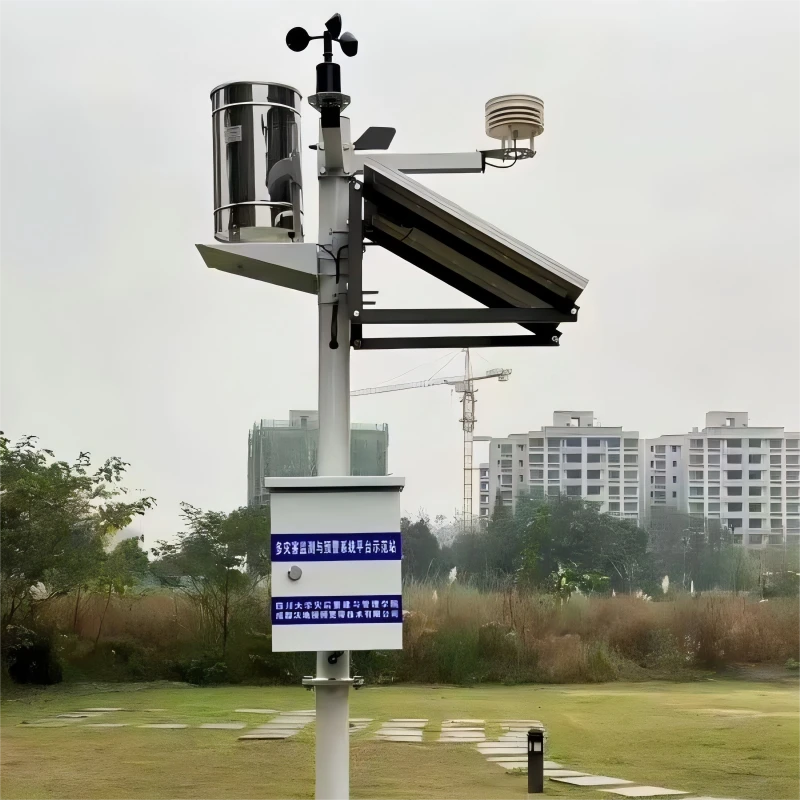What Is a Weather Station?
A wireless weather station measures and analyzes weather data. It uses sensors and tools to monitor temperature, humidity, air pressure, wind, rainfall, and other weather conditions.
Weather stations give accurate and timely data. This helps people and groups get ready for weather challenges. It also helps them handle disasters, production, and daily life more effectively.
These stations typically consist of sensors, data collection systems, processing and storage units, communication tools, and power sources.
Types of Weather Stations
Weather stations come in two main types: traditional and modern. Modern stations include remote, automated, and portable versions. Traditional weather stations often use wired networks to send data. In contrast, modern stations use more wireless technologies like Wi-Fi and cellular networks.
Does a Weather Station Always Need a Wireless Network?
The need for wireless connectivity depends on the type of station, its purpose, and the environment. Here are some situations where wireless networks may be needed or not:
When Wireless Networks Are Not Required
1. **Local Data Logging**
Some weather stations store their data in internal memory. Users can access this data through USB connections or SD cards.
2. **Wired Connections**
Some systems use Ethernet or other wired methods to send data to storage or analysis sites. This removes the need for wireless communication.
When Wireless Networks Are Necessary
1. **Remote Data Transmission**
A wireless network is really important for sending data to a far – away server or monitoring place. You can send it right away or at set times. It uses technologies like GPRS, 3G/4G/5G, Wi – Fi, LoRa, or satellites.
2. **Real-Time Monitoring**
Applications that need quick updates include aviation, traffic management, and emergency response. These applications depend on wireless communication for constant data streams.
3. **Flexibility in Deployment**
Wireless networks remove the need for physical cables. This makes it easy to install or move weather stations as needed, without any infrastructure limits.
4. **Cost-Effectiveness**
Wireless setup usually costs less than wired setup. This is especially true in remote areas or places with tough terrain.
5. **Remote Areas**
In areas with no wired set – up, like mountains, oceans or forests, wireless ways like LoRa, 4G/5G or satellites are a must.
Benefits of Wireless Technology in Weather Stations
1. Remote Data Accessibility
Wireless connectivity makes it easy to transfer data from remote stations to central servers or control centers. This helps us make better decisions.
2. Real-Time Updates
Wireless systems make it easy to share data. This helps people react fast in important weather situations.
3. Enhanced Deployment Options
Wireless technology allows for greater flexibility in placing and moving weather stations as needed.
4. Wide Coverage
Wireless networks can work in places without traditional coverage. This is different from wired systems, which depend on geographical infrastructure. This allows for better monitoring in many areas.
5. Multiple Communication Methods
Weather stations use options like GPRS, Wi-Fi, and 4G/5G. They pick the best way to communicate based on the local area.
6. Low Power Consumption
Designers make wireless equipment to reduce energy use. This is great for solar-powered weather stations. These stations can work without grid electricity and operate on their own.
7. Improved Security Features
Encryption technologies keep wireless signals safe between the station and servers. This protects data from being intercepted or changed.
8. Maintenance costs:
Wireless networks often cost less to maintain than wired ones. This is because they reduce the need for repairs from line failures.
9. Adaptability:
Wireless networks can handle bad weather and tough locations. This helps weather stations work well and reliably.
10. Expandability:
Using wireless networks makes it easier to connect weather stations with other devices or systems. This helps with smooth data sharing and teamwork.
Wireless networks have many benefits, but they also have some problems. These problems include signal interference, delays in transmission, and areas with weak or no coverage. When setting up a weather station, think carefully about the network, data-sending needs, and budget.
In some cases, using both wired and wireless networks can improve data transmission. If a weather station has wired access, it will use wired networks. This is for data transfer.
The weather station may be in a remote area or it could be mobile. In these cases, it will rely mostly on wireless connectivity.
